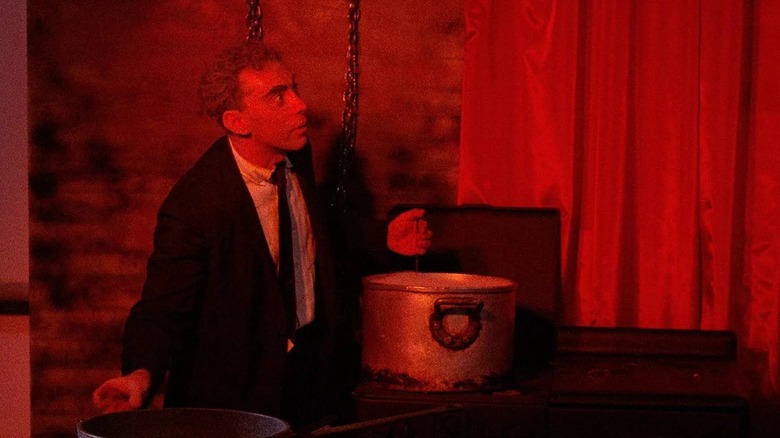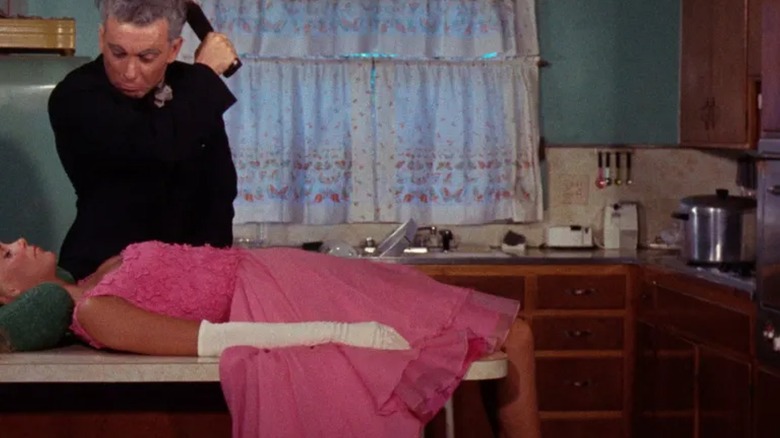Stephen King has been topped the King of Horror for a motive. The most effective-selling creator intimately understands the vignettes of terror which have the ability to induce concern and anxiousness throughout the human thoughts. Banking on this experience, King typically takes to Twitter to suggest a horror title or two and spotlight missed style gems sometimes. Generally, he even tweets about films he would not like, like that one time when King talked about the one film he ever walked out of as an grownup. In a 2021 tweet of the same taste, King name-dropped the worst horror film he has ever seen:
“What’s the worst horror film you ever noticed? For me, BLOOD FEAST.”
The characteristically blunt nature of King’s assertion would possibly really feel a bit too scathing at first, however “Blood Feast” undoubtedly lives as much as its infamy. Not a reliable horror movie by any stretch of the creativeness, Herschell Gordon Lewis’ “Blood Feast” loved unimaginable success on launch resulting from purely circumstantial causes, as its recognition had little to do with its restricted deserves. Having stated that, Lewis’ movie takes on a historic significance that’s not possible to disregard: it’s the first American splatter movie, pushing the boundaries of onscreen blood, intercourse, and gore to its limits.
When the movie was launched in 1963, the Hays Code had already began to taper off, and Alfred Hitchcock’s “Psycho” had begun to form and popularize the slasher style. With viewers sensibilities extra receptive to onscreen violence and shock worth than ever earlier than, Lewis made the calculated effort to make a movie that will shatter the brink of what was deemed acceptable on the massive display. To place it merely, “Blood Feast” is an exploitation horror film that verges on being incoherent, but it surely’s additionally an undeniably essential movie within the historical past of horror cinema.
Blood Feast established the splatter style
The plot of “Blood Feast” — in the event you may even name it that — facilities on Fu’Advert Ramses (Mal Arnold), a serial killer who targets girls and harvests their organs to resurrect the Egyptian goddess Ishtar. Detective Pete Thornton (William Kerwin) is assigned to the case, and he notes that bodily mutilation is a constant sample shared by the victims, whose crime scenes all the time seem like a massacre. Ramses’ motivation is to concoct a “blood feast” with the blood and limbs of the murdered girls, however we’re by no means instructed why he is so obsessive about resurrecting an Egyptian deity and would go to such excessive lengths. All the things that occurs throughout the movie’s 67-minute runtime is distastefully schlocky and over-the-top, its depravity being too mean-spirited to tackle an ironic or satirical taste.
Lewis was acutely conscious that “Blood Feast” was one-of-a-kind, within the sense that no person earlier than this had dared to shamelessly situate exploitation as a horror flick’s main promoting level. The advertising and marketing technique employed was a aware effort to generate lurid hype: barf baggage had been handed out throughout the premiere, and Lewis marketed the movie as a turning level in horror historical past. “Nothing so stunning within the annals of horror” was plastered throughout the posters, and this sentiment was backed up by the relentless gore and express salaciousness (which overshadows the narrative on function). This clearly labored within the movie’s favor, because it racked up $4 million on the field workplace in opposition to its meager $24,500 finances.
What “Blood Feast” did handle to do was normalize excessive onscreen violence to an extent, because it proved that there was an viewers for machete-wielding killers who hacked away at our bodies with out regret. Ramses, irrespective of how hole or unrefined his character could also be, emerged as a precursor to iconic horror antagonists like Jason Voorhees and Michael Myers. The one distinction is that “Blood Feast” shouldn’t be really good, it is merely the primary of its type.

